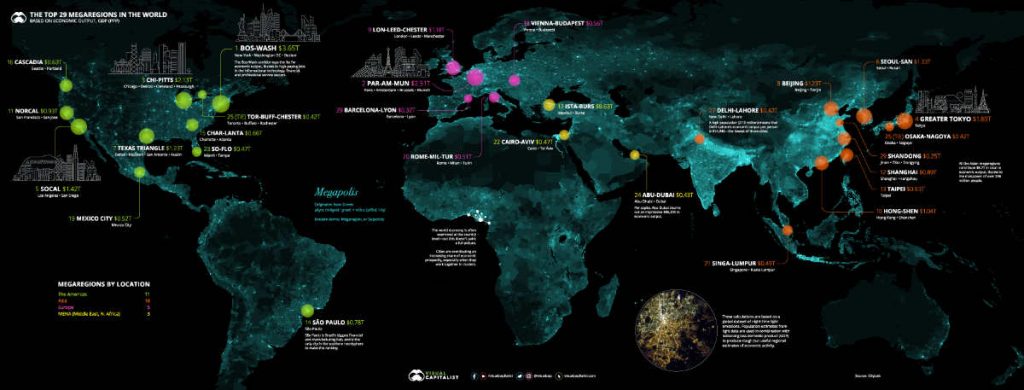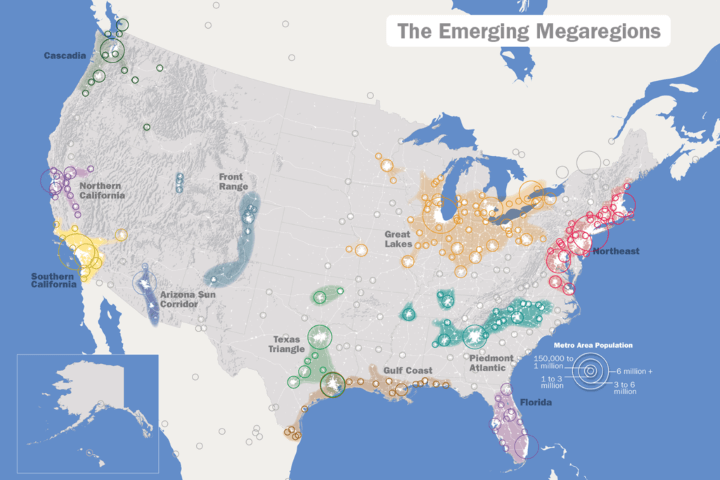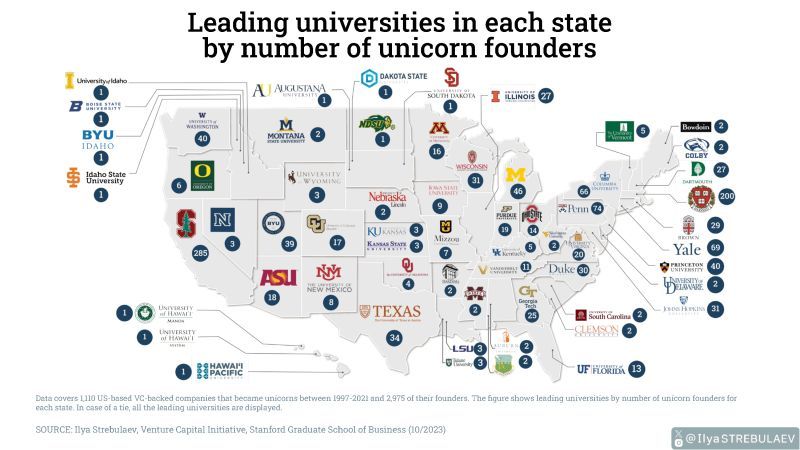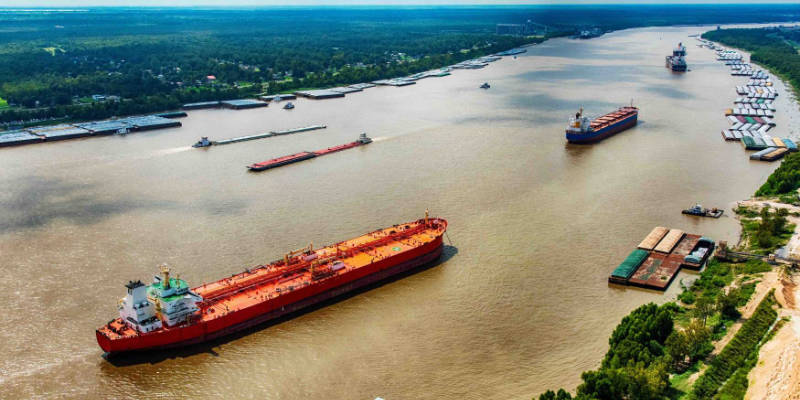In an era of global hyper-competitiveness and increasing economic fragmentation, megaregions are emerging as pivotal geographical entities that will shape the competitiveness of the United States in the 21st century. These areas contain interlocking economic systems, shared natural resources and ecosystems, and common transportation systems that link population centers. More importantly, just 11 megaregions account for over 80% of the US population and 90% of its economy. For US small businesses seeking to scale, targeting US megaregion expansion may create significant opportunities in home markets versus international expansion. The United States contains nine of the world’s 29 largest megaregions. BosWash (US Northeastern Corridor) ranks #1 with an economic output exceeding India and Germany (Europe’s largest economy). In this blog post, we explore the development of US megaregions, their significance, and their evolution within the US. We discuss important megatrends impacting the United States and its megaregions in the coming decades. We’ll also offer market entry and expansion advice for global and domestic small and medium-sized businesses (SMBs), presenting a few must-have solutions from the ClearSky 2100 Ventures Partnerships for Growth portfolio. We’ll highlight solutions such as Deel (workforce management), Alliance Virtual Office (workplace infrastructure), and edX(online learning), as well as their advantages and benefits in supporting small business growth and helping companies secure competitive advantages within US markets.

Defining Megaregions
Megaregions are vast geographical areas that comprise multiple MSAs and their connecting regions. While there is no universally accepted definition, they are generally characterized by high population density, extensive transportation networks, and economic interdependence. Megaregions are not bound by state or political boundaries but rather defined by the flow of goods, services, people, and information. Some well-known examples of megaregions in the United States include the Northeast Megaregion (BosWash), which includes cities like Boston, New York, Philadelphia, and Washington, D.C., and the Texas Megaregion (Texas Triangle), encompassing Dallas, Fort Worth, Austin, San Antonio, and Houston-Galveston. In total, there are 11 US megaregions driven by the depth and breadth of the US $27.9 trillion economy, and its 336.4 million population. For the foreseeable future, we expect US megaregions to continue to power global growth despite fluid political dynamics, socio-economic and demographic trends, and the emergence of competitive megacity growth centers in Asia and Africa.
The idea of the megaregion originated in the early 1900s through the concept of conurbation, a term coined by French geographer Jean Gootman. This was a term applied to observations of the Boston to New York corridor which eventually was termed BosWash, the first such megalopolis in the modern era. Although definitions vary, researchers have sought to delineate megaregions through various models including satellite imagery, patent registration, innovation, economic output (> $300 billion), and commuter patterns.
The Top 29 Megaregions in the World

Source: Visual Capitalist (2019)
Other megaregions in the US include:
List of US Megaregions
- Piedmont Atlantic Megaregion: An area of the Southeastern United States that includes the MSAs of Atlanta, Birmingham, Charlotte, Memphis, the Research Triangle, and Greensboro Winston-Salem Highpoint. The Piedmont Atlantic Megaregion covers an area of 630,000 km2, larger than the country of France.
- Florida Megaregion: An area covering the Southern part of Florida
- Gulf Coast Megaregion: MSAs such as Matamoros-Brownsville and Reynosa-McAllen straddle the US-Mexico Border through to the Pensolca-Navarre and Fort Walton areas in the Florida Panhandle.
- Great Lakes Megaregion: Includes the MSAs of Minneapolis-St. Paul, St Louis, and Kansas City, with some researchers from Ottawa, Montreal, and Quebec City.
- Front Range Megaregion: This area starts at the Colorado-Wyoming area and incorporates New Mexico’s MSAs of Albuquerque and Santa Fe.
- Arizona Sun Corridor Megaregion: Phoenix MSA Tucson MSA with the urban areas extending into Mexico, reaching the communities of Heroica, Nogales, Agua Prieta
- Southern California Megaregion: LACMA, the Las Vegas Valley area, and Tijuana, Mexico.
- Northern California Megaregion: The Great San Francisco Bay area, the Monterey Bay area, Sacramento, and Northern San Joaquin Valley
- Cascadia Megaregion: Includes the states of Oregon, Washington, Idaho (Northern), and the Canadian Province of British Columbia.
BosWash is the world’s largest megaregion with a population of over 50 million and a GDP that exceeds $4 trillion.
Bloomberg City Lab
Megaregions are more than just a cluster of cities; they represent interconnected economic, social, and cultural ecosystems. These regions often have unique identities and specialized industries. For example, the Silicon Valley-San Francisco megaregion is renowned for its technological innovation, while the Great Lakes Megaregion is known for manufacturing and transportation. These regions will continue to evolve given current trends in technology, manufacturing, sustainability, etc.
Why It’s Important to Understand Megaregions
For small and medium businesses, framing growth opportunities in the context of megaregions creates a unique market perspective that can support small business commercial strategies. For example, choices to compete in international versus domestic markets can, at times, ignore the significant opportunities present in the US. Understanding cities and capturing markets with a deeper dive is essential to staying competitive. A recent blog post by our team at ClearSky 2100 presented key takeaways from the McKinsey Global Institute report Pixels of Progress. The research argued for the importance of micro-regional analysis, identifying pockets of economic growth within countries at varying stages of development. Similarly, in the United States, small businesses may miss growth opportunities as they focus financial and human capital on opportunities in markets that may not bear fruit.

Source: America 2050 – Regional Planning Association (2008)
From our personal experience building partnerships in over 50 countries and 40 industries we’ve seen instances where companies misread the market for international expansion expending significant amounts of human resources and financial capital pursuing opportunities outside their home markets. As small business consider their go-to-market strategies, adopting megaregions as a geographical reference may provide clarity as well as new opportunities as they consider avenues for growth. There are many reasons to frame growth opportunities in the context of megaregions. These include:
Economic Significance
Understanding megaregions is crucial because they drive a significant portion of the U.S. economy. These interconnected areas account for 90% of the country’s economic output. They also represent significant investments in innovation and employment opportunities. For instance, the BosWash megaregion, with its estimated GDP of $4.4 trillion, contributes approximately 15% of the nation’s Gross Domestic Product (GDP). For small businesses, building a market entry strategy around a megaregion framework, in many cases, offers more opportunities than a narrowly defined market perspective. For example, a small business expanding throughout the BosWash megaregion may find more opportunities for growth than expanding internationally or remaining in a narrowly defined geographical unit, e.g., city, state, or MSA. Similarly, companies from Europe, Asia, or Latin America may benefit from expansion into a particular US megaregion versus remaining in their home market. We note that there are many domestic and international pursuing a similar approach. However, many of these initiatives are not built around a megaregion model.

Infrastructure and Transportation
Megaregions are hubs of transportation and infrastructure development. They include extensive road networks, airports, seaports, and public transportation systems. Efficient infrastructure within megaregions facilitates the movement of people, goods, and services, making it vital for the functioning of the broader U.S. economy. For instance, the Texas Triangle, comprising Dallas, Houston, and San Antonio, is home to a vast network of highways and intermodal transportation hubs, facilitating the efficient flow of goods across the region. This is also the case of cities in the Piedmont and Great Lakes megaregions, where many of these cities rank among the largest trucking and freight markets in the US.

Innovation and Knowledge Exchange
Megaregions foster innovation and knowledge exchange through the presence of research institutions, universities, and technology clusters. These regions serve as hotbeds for innovation, attracting talent, entrepreneurs, and startups. As such, businesses can tap into the knowledge-sharing networks and leverage them for growth and development. The NoCal and BosWash megaregions remain world-renowned centers of innovation in the US. In particular, a recent innovation benchmarking study was conducted comparing the 50 US states against 71 states in Europe and 132 states in Latin America. Three factors were analyzed: orientation to knowledge work, adaption to globalization, and capacity to innovate. In both studies, California and Massachusetts ranked #1 for innovation.

The United States remains a global leader in R&D spending, with 30.7% of global R&D spending in 2020. According to the Congressional Research Service, in 2020 over $700 billion was spent on R&D across three key areas:
- Basic Research: (15.2% of total spending) Experimental research or theoretical work undertaken primarily to acquire new knowledge of the underlying foundations of phenomena and observable facts without any particular application or use in view.
- Applied Research (19.7% of total spending): Original investigation was undertaken to acquire new knowledge, directed primarily, however, toward a specific, practical aim or objective.
- Development (65.1% of total spending): Systematic work, drawing on knowledge gained from research and practical experience and producing additional knowledge that is directed to producing new products or processes.
Urban Planning and Sustainability
Given the structure of megaregions, urban planners must address issues such as transportation congestion, housing shortages, and environmental impact. The effective planning of megaregions is essential to ensure that growth is sustainable and resilient, benefiting not only large corporations but also SMBs and local communities. Megaregions typically cross multiple county and state boundaries but lack the governance models to address effectively urban planning challenges as these remain the purview of states. Attempts have been made to structure multijurisdictional planning initiatives with little success. Nevertheless, across various regions, we expect urban challenges to be more pronounced as demographic shifts occur, social challenges emerge, and once vibrant industries diminish. We expect megaregions in the Western US, Gulf Coast, and Florida to experience challenges but create significant small business growth opportunities in the coming decades.

Growth Trends in Megaregions
Population Growth
The United States is currently undergoing regional population shifts due to changing demographics. Retirees and those in search of a better quality of life continue to relocate to megaregions, primarily Florida, the Arizona Sun Corridor, the Texas Triangle, and Piedmont Atlantic. According to the US Census Bureau, the top five states for experiencing net migration were Florida (622,476), Texas (475,252), North Carolina (211,867), Arizona (182,362), and South Carolina (165,948). Those that suffered net population lost included California(−871,127) New York(−664,921), Illinois(−282,048), Massachusetts(−110,866), and New Jersey(−107,749).
Economic Clustering
By their nature, megaregions often contain economic activities clustered around specific industries. For example, the San Francisco-Silicon Valley Megaregion remains a global hub for technology and innovation, hosting numerous tech giants and startups. Meanwhile, the Midwest Megaregion has a rich history of manufacturing and transportation-related industries. Additionally, sectors such as high-tech manufacturing, healthcare, tourism, energy, agriculture, defense, etc can be found powering various megaregions: Texas Triangle (energy, high-tech manufacturing), Florida (tourism), and California (defense). The passage of the CHIPS and Science Act (CHIPS Act) will create substantial economic opportunities in various megaregions. Megaregions will benefit from the spending for semiconductor fabrication, R&D, and resilient supply chains, including Arizona Sun Corridor, Front Range, Texas Triangle, BosWash, Great Lakes, and states such as Utah and Idaho.
Infrastructure Investment Jobs Act Spending by Segment

Source: KPMG
Transportation Development
Transportation networks in megaregions are continually evolving to accommodate growing populations and economic activity. Investment in high-speed rail, airports, ports, and highways is common, as these regions must address congestion and facilitate the movement of goods and people. More recently, in 2021, the US Congress passed the $1.2 trillion Infrastructure Investment and Jobs Act. The legislation allocates significant spending for roads and bridges ($326 billion), Passenger and freight rail ($63 billion), and Port and Waterways ($17 billion).
Housing and Real Estate
One of the challenges accompanying megaregion development is the increasing demand for housing. Megaregions across the US Sunbelt (SoCal, Arizona Sun Corridor, Texas Triangle, and Flordia) continue to experience strong demand for housing benefiting from climate migration and an aging population. However, several factors will impact housing and real estate in these areas, including inflation and interest rates, evolving workforce trends, regulatory challenges, and geopolitical risks.
Megatrends Driving Growth
The evolution and development of megaregions areas will be influenced significantly by several megatrends. Below, we list four key megatrends to watch in the coming decades.
- Aging Demographics: In 2019, Millennials(1982-2000) overtook Baby Boomers(1946-1964) as the US’ largest generation. However, Boomers remain a formidable demographic with a population of 73 million. More importantly, by 2030, all Boomers will be 65 years or older. These are powerful trends that will influence migratory patterns and spending across various markets. Currently valued at $456 billion, the market is expected to grow as services emerge to provide care to Boomers, enabling them to live healthy and productive lives. Additionally, these demographic trends and migratory patterns will also favor various megaregions, specifically Florida, the Arizona Sun-Corridor, and the Texas Triangle.
- Environment & Climate: The recent US passage of the Inflation Reduction Act, the CHIPS and Science Act, and the Infrastructure Investment and Jobs Act provides significant funding for various initiatives to address climate and environmental challenges. More importantly, analysts expect US investment in climate tech to exceed $500 billion in current and nascent technologies. Expected investment will continue to drive the growth of green jobs and the green economy as companies seek to scale climate tech. Key sectors to benefit include wind and solar energy, agriculture, and transportation. Megaregions to benefit include SoCal NoCal, and BosWash.
- Geoeconomic Realignment: Understanding the market potential of megaregions provides a useful hedge against uncertain geoeconomic challenges. Post-pandemic, current debates surrounding economic fragmentation/re-globalization, along with the emergence of BRICS and proported challenge to the US, suggest a geopolitical realignment underway. Although we expect the BRICS challenge to go nowhere, continued and increasing geopolitical risks have forced many companies to restructure their supply chains. Nearshoring and reshoring will provide significant opportunities for growth across several US megaregions, including the Texas Triangle, Arizona Sun Corridor, Gulf Coast, and Upper Midwest.
- Artificial Intelligence: It is estimated that 30% of hours worked across the US economy can be automated by AI, according to the McKinsey Global Institute with Goldman Sachs estimating up to 300 million jobs to be replaced by AI. The rise of Chat GPT and the proliferation of AI solutions from healthcare to content creation and administrative tasks suggest that AI’s impact will continue to reshape the workforce of the future. According to the forecast, the AI market is expected to grow from $95 billion in 2021 to nearly $2 trillion by 2030. Bos-Wash and NoCal megaregions have been innovation hubs for AI development and growth and will remain so for the foreseeable future.


Capturing Small Business Growth Opportunities
In the United States, over 33 million small businesses exist accounting for 99.9% of all US businesses. Additionally, small businesses represented 63% of new jobs created between 1995 to 2021. The importance of these SMBs cannot be underestimated as American entrepreneurship remains at an all-time high. Globally there are over 500 million entrepreneurs. However, many of these businesses operate within a narrowly defined geography. Zooming out to understand US megaregions provides opportunities to scale for both international and domestic players.
- Access to a Diverse Talent Pool: Megaregions attract a highly diverse and skilled workforce due to the abundance of job opportunities in various industries. In an era of AI, jobs such as healthcare, STEM, etc., will continue to thrive. Small businesses with access to a broad talent pool, make it easier to find employees with the necessary skills and expertise to scale across these geographies.
- Knowledge Exchange and Innovation: Megaregions are centers of innovation and knowledge exchange. SMEs can tap into the extensive network of research institutions, universities, and technology clusters to stay at the forefront of their respective industries. Collaboration with local universities and research centers can lead to breakthroughs and advancements that benefit SMBs and the broader economy. Standford, Harvard, MIT, Cornell, and University of Pennsylvania academic institutions driving innovation and responsible for the largest number of unicorns.
- Access to Markets: Megaregions have large and diverse consumer markets. SMBs operating within these regions can easily access a substantial customer base, which can be critical for their growth. Megaregions are undergoing different development paths as those in the Sunbelt are experiencing growth driven by migratory patterns. Conversely, megaregions such as BosWash and Great Lakes continue to experience quality of life and economic decline as once-important industries diminish. Nevertheless, both areas continue to offer promising opportunities for growth. Proximity to a densely populated area allows SMEs to better understand consumer preferences, adapt their products or services, and establish a loyal customer base.

Solutions for Small Business to Grow and Stay Competitive
Taking advantage of the opportunities present in US megaregions requires small and medium enterprises be equipped with solutions to address a host of challenges. These challenges include workforce management, physical infrastructure, etc. To keep pace with growth, here are must-have solutions for SMEs as they seek to expand across megaregions. Let’s dive in.
Deel – Scaling Across Megaregions
Deel remains the global leader in all-in-one HR solutions with an extensive suite of solutions to address almost every aspect of a company’s workforce needs. The company continues to add to its solutions offering with recent acquisitions of Capbase (Equity Management), Zavvy (People Management), etc. Solutions provided by Deel are well-suited to organizations seeking to scale with support offered in over 150 countries. Within the US core solutions to support small businesses in scaling across US megaregions include:
US PEO and Payroll:
Deel’s US PEO and Payroll provide businesses with streamlined processes and benefits for efficient workforce management. With Deel’s enhanced suite of PEO (Professional Employer Organization), US payroll, and benefits administration—businesses can finally enjoy the value of having one unified HR platform to seamlessly onboard, pay, and compliantly manage teams wherever they’re based. PEO and US payroll solutions significantly reduce duplicative, costly work and consolidate tech stacks.
Deel Global All-in-One Workforce Management Platform

Key advantages of Deel PEO and Payroll Services:
- Compliantly pay your team in minutes with registration support in all 50 states including tax filing and administration and benefits management.
- Ensure benefits compliance with federal, state, and local law, COBRA administration, and ACA compliance.
- Take advantage of Deel’s in-house labor experts,1.25min first response time, tight security, and data protection.
Deel’s PEO solutions offer tremendous value to small and growing businesses. From automating nationwide employee onboarding to reducing HR and benefits administration costs while providing Fortune 500-caliber benefits and enhancing compliance on a single platform supported by a dedicated team of experts, Deel’s PEO service empowers any business.
US Contractor Programs
With the war for AI talent heating up, onboarding speed and offering a quality employee experience may become challenging for some companies. For domestic companies seeking to tap into a wider talent pool across megaregions or international companies seeking to enter the US markets, Deel offers its US Contractor solutions. The United States treats independent contractors differently than full-time employees, which creates regulatory risk. Key advantages of the US Contractor program include:
- Quickly onboard independent contractors in the US within minutes.
- Fund Payroll with one-click
- Ensure compliance with US regulations to avoid misclassification.
Deel HR
Deel HR allows companies to manage all things HR for the entire workforce in one centralized platform. Key capabilities of Deel HR include
- Onboarding & Offboarding: Background checks, APP provisioning, equipment and workspaces, localized contracts, etc
- People Management: Manage expenses, documents, people director, vacation, etc.
- Reporting and Analytics: Headcount reports, payroll reports, org charts, and growth
Deel HR is free for companies with less than 200 employees.

edX – Democratizing Knowledge Strengthening Competitiveness
Megaregions will continue to thrive in America, driven partly by a continued focus on innovation and education. As AI continues to impact the economy and workforce of the future, staying ahead of the curve and remaining competitive is imperative for small businesses. edX is a leading massive open online course (MOOC) platform offering a wide range of high-quality courses from prestigious universities and institutions worldwide. Founded by Harvard University and MIT in 2012, edX has grown to include partnerships with over 160 leading universities, including Stanford, Berkeley, and the University of Oxford, and others across Europe, Asia, and North America.
The platform provides learners with access to courses across various disciplines, from computer science and business to humanities and natural sciences. Many courses are free, and verified certificates can be pursued for a fee. edX also offers MicroMasters programs, Professional Certificates, and complete online degree programs, catering to diverse learning needs and career goals. The online degree programs require a separate admission process.
For small businesses, edX is a valuable resource for workforce development and upskilling. Entrepreneurs and employees can acquire practical, industry-relevant skills in areas such as digital marketing, data analytics, and project management, which can directly contribute to business growth. The platform’s flexibility allows learners to balance their studies with work commitments, making it an ideal solution for busy professionals.
Moreover, edX’s emphasis on practical, industry-relevant skills ensures that small businesses cannot only stay competitive in rapidly evolving markets but also foster innovation and efficiency within their organizations. By leveraging the expertise of top universities and industry leaders, edX enables small businesses to access cutting-edge knowledge and best practices.

Alliance Virtual Offices – Optimizing Regional Workplace Infrastructure
The ability to rapidly expand across megaregions partly depends on quickly establishing a presence in core markets. Alliance Virtual Offices (AVO) provides both virtual offices, fixed offices, and coworking spaces to support companies and teams. Key benefits include flexibility, reduced costs, and market access across all US megaregions. Media, trucking & logistics, construction & general contractors represent industries benefiting from Alliance Virtual Offices. Companies can choose from 1400 locations worldwide with a presence in all 50 states. More importantly, a robust presence in primary and secondary cities across key megaregions, e.g., BosWash, Arizona Sun Corridor, and Texas Triangle AVO, supports businesses of all sizes, both domestic and global. However, key small business activities benefiting from Virtual Offices and Coworking spaces include:
- Small Law Firms
- Trucking and Logistics
- Construction and Contractors
- Health and Wellness
- Media and Entertainment
Reshaping Economic Opportunities For Small Businesses
Finally, megaregions are dynamic and interconnected areas that will shape the economic future of the United States as US society transitions and transforms. As these regions continue to grow and evolve, it becomes increasingly important for small business to understand their dynamics and leverage their opportunities. In an era of geoeconomic uncertainty and increasing geopolitical risk, the US presents opportunities for both international and domestic SMEs to scale. Access to a diverse talent pool, infrastructure advantages, R&D leadership, significant public and private sector investment, and proximity to vast consumer markets allow megaregions to serve as a catalyst for small business growth. As megaregions continue to thrive, SMEs must position themselves strategically within these dynamic ecosystems to harness their potential for growth and value creation.
For more information on megaregions and to discuss ideas for your company, contact our team. For information on our partners Deel, Alliance Virtual Offices, and edX follow the links below
Disclosure: At ClearSky 2100, our portfolio partly consists of affiliate partnerships. We may earn a small commission from buying links on our site at no cost to you.






